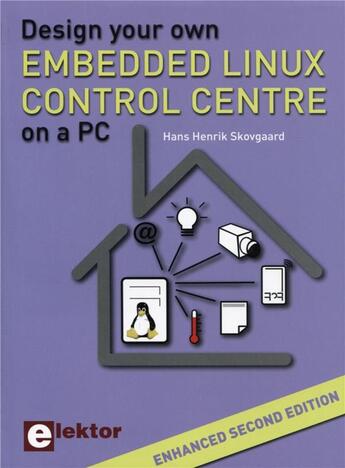Résumé:
Today if you want to electronically control your home you have a lot of opportunities. But this book is different. It is not about X10, ZigBee, Z-wave or one of the many other leading or even bleeding edge systems, which can be acquired today. This book is about a do-it-your-self system made out... Voir plus
Today if you want to electronically control your home you have a lot of opportunities. But this book is different. It is not about X10, ZigBee, Z-wave or one of the many other leading or even bleeding edge systems, which can be acquired today. This book is about a do-it-your-self system made out of re-use. Why? Well, because you have just got to do something with your old technology gathering dust and you don't want to spend a fortune on equipment.
The main system described in this book re-uses an old PC, a wireless AC power outlet -with 3 switches and one controller- and a USB web camera. All this is linked together by Linux -as it can be acquired free of charge.
This book brings you all the basics of how to set up a Linux environment -including a software development environment- so it can be used as a control center. It guides you through the necessary setup and configuration of a web server, which will be the interface to your control centre.
This enhanced second edition contains more than 180 extra pages compared with the first one. New edition enhancements include details of extending the capabilities of your control center with ports for a mobile phone (for SMS/text messaging) and the Elektor Thermosnake -for low-cost networked real-time thermal monitoring of your house and outbuildings. Now you can additionally also send all kinds of useful temperature and sensor warnings to a mobile phone.
Recommended prerequisite experience is just some small exposure to PC software and hardware, including ability to surf the Internet, burn a CD-ROM and assemble a small PCB or two.
And of course, Yes! We still kept a handle on your development costs -all custom software for the enhanced control centre is both listed in the book and is available for free download from Elektors' homepage.
Donner votre avis














